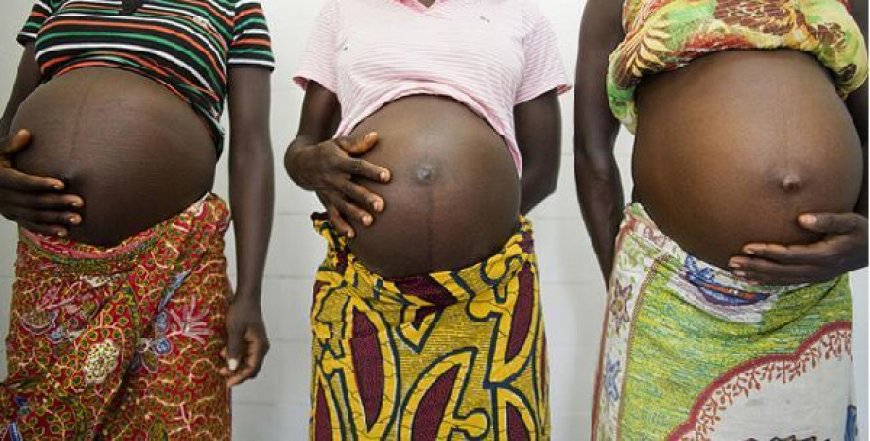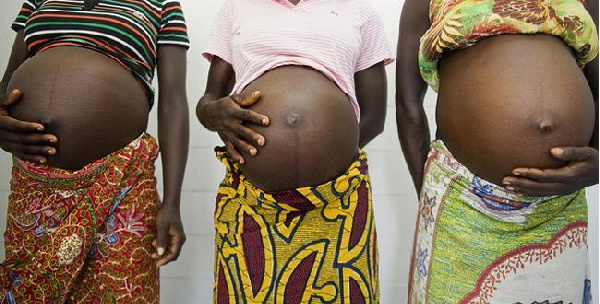Sex with older men surges teenage pregnancy in Upper Manya Krobo – DCE

Report: High Prevalence of Teenage Pregnancy in Upper Manya Krobo District

Introduction
A recent report by the Ghana Health Service indicates that the Upper Manya Krobo district ranks second nationwide in the prevalence of teenage pregnancy.
Prevalence Rates
- In 2021, the district recorded a prevalence rate of 19.3%, placing it first in Ghana and in the Eastern Region.
- In 2022, the district ranked fifth in Ghana and second in the Eastern Region, with a prevalence rate of 18.2%.
- Last year, the district recorded a 16.6% prevalence rate, placing it 11th in Ghana and third in the Eastern Region.
- In the first quarter of 2024, the district recorded a 17.8% prevalence rate, placing it third in Ghana and second in the Eastern Region.
Contributing Factors
- Adolescent girls engaging in transactional sex with older men for financial support to meet their basic needs.
- High poverty rates.
- Poor parental support.
- The influence of Western lifestyles.
Concern and Collective Effort
The District Chief Executive for Upper Manya Krobo, Joe Sam, addressed the assembly members and expressed deep concern over the situation.
“This current situation is indeed quite alarming and most disturbing, and therefore requires the effort of all of us to help address the issue,” the DCE said.
He emphasized the need for a collective effort to address the issue.
Interventions
In response, the District Health Service, in collaboration with JOICFP, has intensified outreach programs to promote access to sexual and reproductive health services targeted at the youth to reduce the high teenage pregnancy rates.
Additionally, the Assembly has allocated office accommodation to support the project.
UNFPA 8th Country Program
The Upper Manya Krobo District is also among the eleven districts and municipalities in the Eastern Region selected to benefit from the United Nations Population Fund (UNFPA) 8th Country Program.
This program aims to reduce child marriage, gender-based violence, and maternal deaths in the region.
Child Marriage and Consequences
Faisal Bawa, Program Analyst for UNFPA’s Gender-Based Violence Unit, noted that child marriage significantly contributes to adolescent pregnancies, with over 100,000 cases reported annually in Ghana.
This issue has severe consequences for the development, health, and education of adolescent girls.
Call for Collaboration
Key stakeholders, including Social Welfare, the Department of Gender, and the Ghana Health Service, have been urged to collaborate with UNFPA to accelerate actions addressing these issues.
SDGs, Targets, and Indicators
| SDGs | Targets | Indicators |
|---|---|---|
| SDG 3: Good Health and Well-being | 3.7: By 2030, ensure universal access to sexual and reproductive health-care services, including for family planning, information and education, and the integration of reproductive health into national strategies and programs. | Prevalence rates of teenage pregnancy |
| SDG 5: Gender Equality | 5.3: Eliminate all harmful practices, such as child, early, and forced marriage and female genital mutilation. | Number of child marriages reported annually |
| SDG 10: Reduced Inequalities | 10.2: By 2030, empower and promote the social, economic, and political inclusion of all, irrespective of age, sex, disability, race, ethnicity, origin, religion, or economic or other status. | Factors contributing to high prevalence of teenage pregnancy (poverty rates, poor parental support, influence of Western lifestyles) |
1. Which SDGs are addressed or connected to the issues highlighted in the article?
SDG 3: Good Health and Well-being
The article discusses the prevalence of teenage pregnancy in the Upper Manya Krobo district and the efforts made by the District Health Service and JOICFP to promote access to sexual and reproductive health services for the youth. This aligns with SDG 3, which aims to ensure good health and well-being for all.
SDG 5: Gender Equality
The article mentions that child marriage significantly contributes to adolescent pregnancies, with over 100,000 cases reported annually in Ghana. This relates to SDG 5, which focuses on achieving gender equality and eliminating harmful practices such as child marriage.
SDG 10: Reduced Inequalities
The article highlights factors contributing to the high prevalence of teenage pregnancy, including high poverty rates, poor parental support, and the influence of Western lifestyles. These factors are related to SDG 10, which aims to reduce inequalities and promote social inclusion.
2. What specific targets under those SDGs can be identified based on the article’s content?
Target 3.7: By 2030, ensure universal access to sexual and reproductive health-care services, including for family planning, information and education, and the integration of reproductive health into national strategies and programs.
The efforts made by the District Health Service and JOICFP to promote access to sexual and reproductive health services for the youth align with this target.
Target 5.3: Eliminate all harmful practices, such as child, early, and forced marriage and female genital mutilation.
The mention of child marriage as a significant contributor to adolescent pregnancies relates to this target.
Target 10.2: By 2030, empower and promote the social, economic, and political inclusion of all, irrespective of age, sex, disability, race, ethnicity, origin, religion, or economic or other status.
The factors contributing to the high prevalence of teenage pregnancy, including poverty rates, poor parental support, and the influence of Western lifestyles, are connected to this target.
3. Are there any indicators mentioned or implied in the article that can be used to measure progress towards the identified targets?
Yes, the article mentions several indicators that can be used to measure progress towards the identified targets:
- Prevalence rates of teenage pregnancy: The article provides prevalence rates for different years, indicating the progress or change in the prevalence of teenage pregnancy in the Upper Manya Krobo district.
- Number of child marriages reported annually: The article mentions that over 100,000 cases of child marriage are reported annually in Ghana, which can be used as an indicator to measure progress in eliminating this harmful practice.
- Factors contributing to high prevalence of teenage pregnancy: The article identifies factors such as poverty rates, poor parental support, and the influence of Western lifestyles, which can be monitored and addressed to measure progress in reducing inequalities and promoting social inclusion.
4. SDGs, Targets, and Indicators
| SDGs | Targets | Indicators |
|---|---|---|
| SDG 3: Good Health and Well-being | 3.7: By 2030, ensure universal access to sexual and reproductive health-care services, including for family planning, information and education, and the integration of reproductive health into national strategies and programs. | Prevalence rates of teenage pregnancy |
| SDG 5: Gender Equality | 5.3: Eliminate all harmful practices, such as child, early, and forced marriage and female genital mutilation. | Number of child marriages reported annually |
| SDG 10: Reduced Inequalities | 10.2: By 2030, empower and promote the social, economic, and political inclusion of all, irrespective of age, sex, disability, race, ethnicity, origin, religion, or economic or other status. | Factors contributing to high prevalence of teenage pregnancy (poverty rates, poor parental support, influence of Western lifestyles) |
Copyright: Dive into this article, curated with care by SDG Investors Inc. Our advanced AI technology searches through vast amounts of data to spotlight how we are all moving forward with the Sustainable Development Goals. While we own the rights to this content, we invite you to share it to help spread knowledge and spark action on the SDGs.
Fuente: ghanaweb.com

Join us, as fellow seekers of change, on a transformative journey at https://sdgtalks.ai/welcome, where you can become a member and actively contribute to shaping a brighter future.







